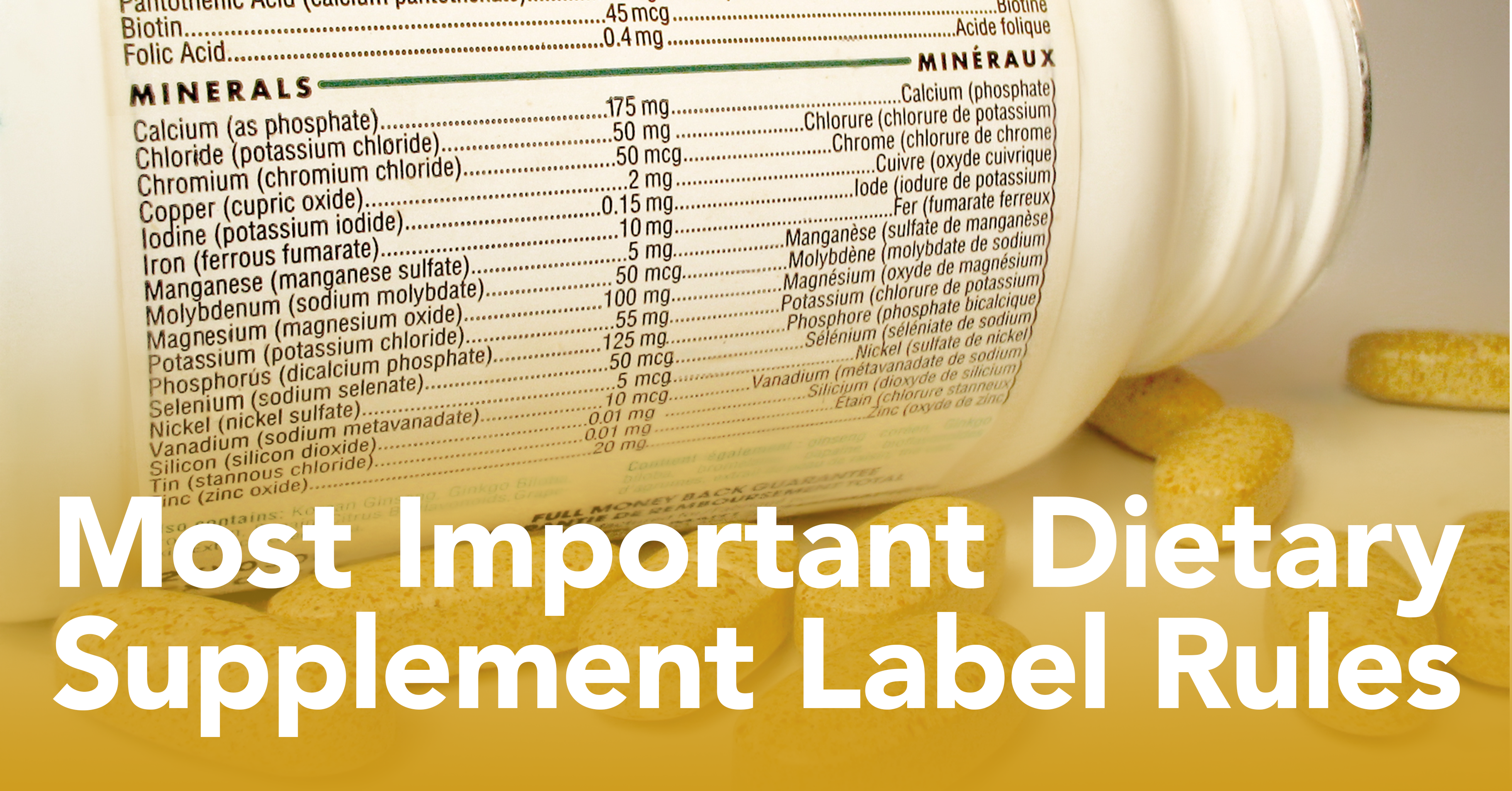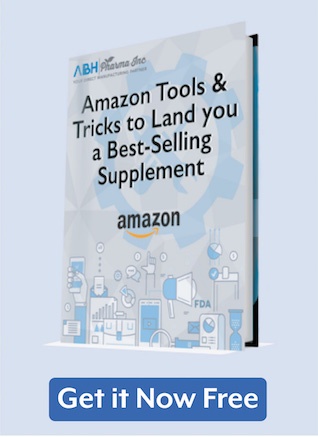There are a number of rules or guidelines set forth by the FDA about supplement labels. If you plan on selling private label vitamins you need to be at least familiar with these guidelines.
While the manufacturer you choose will hopefully take care of your labeling you still want to make yourself familiar with the requirements and guidelines that govern the labeling of supplements especially if you are creating a supplement with a proprietary blend or for children.
Dietary supplements are considered products that are made with the intention of supplementing the diet.
Supplements generally contain at least one of a vitamin, a mineral, a herb or some other type of botanical, an amino acid, a dietary material to increase the total dietary intake in humans or a metabolite, extract, concentrate or constituent or a blend or mixture of any of the types of ingredients that were mentioned above.
Dietary supplements are to be ingested but are not a meal or conventional food item.
What Information Should be on your Dietary Supplement Label
There are 5 constituents known as “Label Statements” that are required on all supplements, these are;
- The name of the dietary supplement.
- The amount contained within the container.
- A nutrition label.
- An ingredient list.
- The name and address of the manufacturer, or the packer and or distributor or all of the above if they are not the same.
The name of the dietary supplement must be placed on the “principal display panel” - the front of the product. The net contents which is the amount of product in the container should also be placed here.
Many opt to have a product with a principal display panel on both sides, if this is the case for your supplement both principal display panels should have the same information.
Then there is the “information panel” which is typically immediately right of the principal display panel. On this section of the label is where you place your supplement facts as well as the information for your manufacturer, packer or distributor.
Supplement Facts vs Nutrition Facts
Then there is also the “Supplement Facts” panel and the “Nutrition Facts” panel. The supplement facts panel is where you list dietary ingredients and their sources including the part of a plant that the ingredient is from.
The Nutrition facts panel doesn’t require you to list the part of the plant. The nutrition facts panel should include all nutrients even those with zero amounts while this is not necessary on the supplement facts panel.
The supplement facts panel should also include the serving size information as well as the servings per container information.
The supplements facts should also include the following if they are included in the supplements in measurable amounts;
- Total calories
- Total fat
- Total Carbohydrate
- Protein
- Dietary fiber
- Calories from fat
- Saturated fat
- Trans Fat
- Cholesterol
- Sodium
- Sugars
- Calcium
- Vitamin A
- Vitamin C
- Iron
Any other ingredients that you make a claim about must be added to the supplement facts label as well. You will also need to declare dietary ingredients that do not have daily values, identifying them as “having no daily value”.
Non-dietary ingredients such as excipients, binders, fillers and preservatives should be listed in the ingredient statement.
Type Size and Font on Panels
The type of font you use should be easy to read and conspicuous. The stipulation for size is as follows; “The letters must be at least one-sixteenth (1/16) inch in height based on the lower-case letter "o," and not be more than three times as high as they are wide, unless you petition for an exemption in accordance with 21 CFR 101.2(f).”
Other Constituents of the Label
There are some label constituents that are not governed by the FDA. Some of these include the below label constituents.
The “Made in the U.S.A.” statement is regulated by The U.S. Customs Service as authorized by the 1930 Tariff Act.
The UPC bar code is made available by the Uniform Code Council and you can get this by visiting their website at www.uc-council.org.
For more label constituents not governed by the FDA you can check out their page on supplement label guidelines for a more comprehensive list.
Order of Listing Dietary Ingredients
All of your dietary ingredients that have daily value amounts must be listed in a specific order. All vitamins, electrolytes and minerals must be grouped together.

Percent Daily Values
The % DV refers to the daily reference value that is found in one serving of your supplement. You must declare the %DV of all ingredients that have FDA established daily values for your supplement label to be considered accurately following the guidelines.
Guidelines for Supplements with Proprietary Blends
If your supplement contains a proprietary blend this must be identified by the term “proprietary blend”. You may also opt to use another descriptive term that is appropriate for your supplement, your brand or your business.
In the same line you are required to list the total weight of all the ingredients in the blend. In a line indented below that, you will need to list the ingredients found in the blend. These ingredients must be listed in linear fashion or in a column.
Whatever you choose, the ingredients should be listed in descending order by weight highest to lowest.
Following these ingredients should be a symbol which directs consumers to a footnote indicating “Daily Value Not Established”. If any of the ingredients in the proprietary blend do have RDIs or DRVs they should be separately listed and their weights should be declared individually on the label.
Providing Nutrition Labeling for Multiple Packet Products
In the case that you have a supplement with multiple packets contained in one main container you can present the information for the different packets on an individual nutrition label on the exterior of the main packaging. You can also alternatively, use an aggregate nutrition label.
Whichever option you choose you should indicate the ingredients are found in one packet – not the example in the image.
Supplements for Children
There are special guidelines for supplement labels on supplements designed for children. If your supplement is designed for children less than 2 years old you are not required to list the following:
- Calories from fat
- Calories from saturated fat
- Saturated fat
- Cholesterol
- Polyunsaturated fat
- Monounsaturated fat
For products for children less than 4 years old do not include the following % DVs;
- Total fat
- Saturated fat
- Cholesterol
- Total Carbohydrate
- Dietary Fiber
- Vitamin K
- Selenium
- Manganese
- Chromium
- Molybdenum
- Chloride
- Sodium
- Potassium
There are a number of exemptions that may apply to the information shared here on supplement labeling. As well as there be other exemptions which apply to information not shared in this article. Since there are a lot of exemptions we wouldn’t be able to list them all here.

You can however find them online in their Guidance Document for Dietary Supplements. There you will find all of the guidelines for supplement labeling which may not be found here as well.
Choosing StockNutra to bring your private label supplement to market helps to take all the hassle out of the process. We are experts in the field with years of experience and we know all the guidelines set forth by the FDA. We run a GMP certified facility and we only offer customers the best products and the best service.





